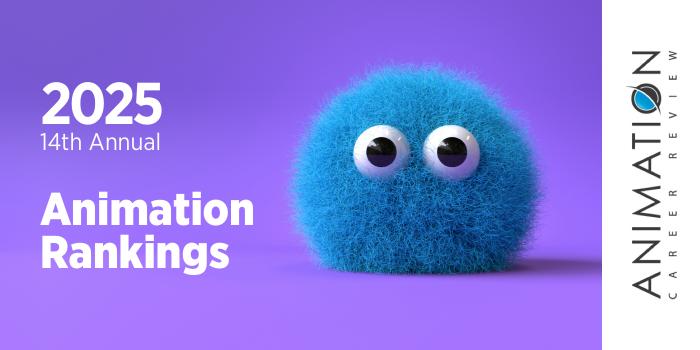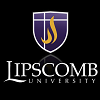
The Bachelor of Fine Arts in Digital Animation from Kennesaw State University prepares students for careers in animation and animation-related industries, or graduate school with a rigorous program in digital animation. Learn more.

| Ranking | School | City |
|---|---|---|
| 1 | Middle Tennessee State University | Murfreesboro |
| 2 | East Tennessee State University | Johnson City |
| 3 | Lipscomb University | Nashville |
Our 2025 ranking -our fourteenth annual- of the top animation school programs in Tennessee. For an explanation of the ranking criteria, click here.

Middle Tennessee State University (MTSU) is the largest producer of graduates in the Greater Nashville area and home to the Charlie and Hazel Daniels Veterans and Military Family Center—one the largest facilities of its kind on a college campus. MTSU is also home to the College of Media and Entertainment (CME). With a focus on news, storytelling, and entertainment, the CME is the only college of its kind.
Within the college is the Department of Media Arts—home to the Animation BS and 18 credit-hour minor. Accredited by the National Association of Schools of Art and Design (NASAD), both programs provide access to the 80,000 square feet John Bragg Media and Entertainment Building, which houses animation and graphics computer labs; radio, television, and recording production facilities; and the Center for Innovation in Media.
The Department of Media Arts provides access to additional facilities such as a 40-foot Mobile Production Lab; five different studios; and numerous other labs. And with its own varsity team for live video production, the department provides plenty of opportunities for real-world, hands-on experiences and opportunities to work with virtual and augmented reality (VR/AR); 360-degree video production; and 3D projection mapping.
All MTSU Animation students have the opportunity to complete an internship in the recently launched MT IMAGINE Animation Studio, which produces high-end animated visuals for clients on a budget. Housed in the College of Media and Entertainment, the studio’s project-based, paid internships allow faculty, students, and even recent graduates to create content for real-world clients. Projects span the 2D and 3D animation, XR virtual production, and VR/AR fields.
Another component of the MTSU Animation program is the chance to volunteer at the annual SIGGRAPH conference. In 2023, 19 MTSU Animation students were accepted as volunteers and one was accepted as a team leader. These artists were among the nearly 300 students selected from over 100 universities worldwide for this coveted program.
The Animation BS is a 120 credit-hour program, including 76 credit hours in the major. Beginning in the first semester, students will explore traditional animation techniques through hands-on project opportunities. Students will gradually advance into coursework that covers advanced digital tools and techniques.
Course examples for the program include: Introduction to Media and Entertainment; Scripts for Media; 2D Animation I-II; Texturing, Lighting, and Rendering; Motion Graphics I-II; Visual Effects; Animation and Performance; Character Modeling and Rigging; Animation Mechanics; History of Animation; Art Appreciation; Film History; Animation Preproduction; and Professional Practices in Animation.
The MTSU Animation BS program culminates with the Animation Capstone, completed across two courses. The capstone consists of an original animated short that will be submitted to film and animation festivals around the world. This project will be centerpiece of the student’s final portfolio.
Graduates are prepared to pursue careers in entertainment (film, animation, television), game design and development, medical visualization, forensic recreation animation, AR/VR, advertising, publishing, architecture, education, and research. Program alumni have been hired at studios such as DreamWorks Animation, Sony Pictures Imageworks, Industrial Light & Magic (ILM), Blizzard Entertainment, Digital Domain, Cinesite, Pixel Magic, Titmouse, Pixomondo, WB Games, Tippett Studio, and Reel FX.
Middle Tennessee State University was established in 1909 as Middle Tennessee State Normal School. The school launched with a two-year training program for teachers. On September 11, 1911, the Normal School opened with 125 students. Today, MTSU serves more than 20,000 students enrolled in over 300 majors and concentrations across nine colleges. Middle Tennessee State University is accredited by the Southern Association of Colleges and Schools Commission on Colleges (SACSCOC).

East Tennessee State University (ETSU) is the only college in the world that awards a Master of Arts in Communication and Storytelling Studies. The school also awards a BA, BS, and minor in Storytelling. Housed in the Department of Communication Studies and Storytelling, the 36 credit-hour MA provides opportunities to specialize in additional areas through electives, making it an ideal option for students seeking an advanced degree after completing the school’s Digital Media or other similar program.
The Digital Media (DIGM) Department at ETSU is part of the College of Business and Technology’s School of Marketing and Media, which provides opportunities to gain hands-on experience through internships and real-world projects. Program options for animators include the Digital Media BS (DIGM BS); the Digital Media MFA (DIGM MFA); and the DIGM minor. As part of ETSU, all programs are accredited by the National Association of Schools of Art and Design (NASAD).
The 24 credit hour DIGM minor consists of four required courses at four credits each, and eight credits of approved electives. Required courses include Digital Animation; Visualization; Digital Game Design; and Visual Effects and Motion Graphics. Electives allow students to create an emphasis in a specific area of Digital Media.
Upon completion of the DIGM minor, students are prepared to pursue entry-level roles in digital animation, game design, motion graphics, VFX, and visualization.
The DIGM BS at ETSU has a Digital Animation concentration with 2D and 3D Pathways, and 20 credit hours of guided electives. Course examples for this 120 credit-hour program include Animation Fundamentals; Principles of Visual Effects and Motion Graphics; Character Animation; Topics in Digital Media History; Principles of Digital Animation; Principles of Visualization; Animation Fundamentals; Technical Communication; Principles of Digital Game Design; and Art History Survey.
2D students will also take Storyboarding; 2D Character Construction; and 2D Animation. 3D students will also take 3D Lighting and Rendering; 3D Animation; and Procedural Modeling and Effects Simulation. Although a minor is not required, some students elect to enroll in the Storytelling minor.
Throughout the ETSU DIGM BS program, students will complete several projects. The culminating experience for the program is the Portfolio Development for Digital Media course, which leads to a professional portfolio of the student’s best work.
The Digital Media MFA at East Tennessee State University is the terminal degree in the field. Designed for artists who have already earned a bachelor’s degree, the program is ideal for professional Animators, Creature Artists, Cinematographers, Visual Effects Artists, 3D Designers, UI/UX Designers, Character Animators, Coders, and Game Artists.
Students in this non-thesis degree program may complete 12 credit hours of study in any area. An additional 12 credit hours are dedicated to team projects for internal and external clients. Another six credits are dedicated to experimental media.
The culminating experience for the ETSU DIGM MFA allows students to develop and finalize a body of work. MFA projects will be reviewed by faculty and peers. Graduates are prepared to pursue leadership roles in areas such as entertainment, games, education, and research.
Graduates of the DIGM BS program are prepared to pursue careers in areas such as 2D animation, 3D animation, motion graphics, visual effects (VFX), character animation, game art and design, advertising animation, level design, modeling, compositing, and technical direction.
DIGM alumni have worked on productions and games such as Lord of the Rings; Avatar; The Last Jedi; The Peanuts Movie; World of Warcraft; Guitar Hero; Thor: Ragnarok; Halo 5; The Avengers; Kung Fu Panda III; Ice Age: Continental Drift; and The Walking Dead. DIGM graduates can also be found at places such as Luma Pictures, Red Storm Entertainment, and Deck Nine.
East Tennessee State University was established in 1911 as East Tennessee State Normal School. The school serves approximately 14,000 students enrolled in more than 140 academic programs across eleven colleges and schools. East Tennessee State University is accredited by the Southern Association of Colleges and Schools Commission on Colleges (SACSCOC).

Lipscomb University (Lipscomb) is one of the few schools to provide Animation BA, BFA, and MFA degrees. Lipscomb is also the first university in the U.S. to purchase the Positron Voyager—the world’s first chair designed specifically for fully immersive cinematic virtual reality. In addition to Animation degrees at all levels, Lipscomb has an 18 credit hour Animation minor that can be added to just about any Lipscomb program. 2D Character Animation; CG Modeling and Lighting; and Storyboarding for Animation are just a few requires courses for the minor.
Housed in the George Shinn College of Entertainment and the Arts’ Animation and Interactive Media Department, the Animation programs at Lipscomb are led by Disney Animators, experts in Maya, and accomplished independent filmmakers. Other program benefits include internships at major studios; speaking events by industry experts each semester; and trips to places such as Los Angeles and Italy to attend animation events.
The Animation BA and BFA programs have overlapping coursework, with 54 credit hours required in the major for the BA, and 64 for the BFA. Course examples across programs include Computer Animation; Perspective, Color and Composition; Storyboarding for Animation; Characters and Costumes; 2D Character Animation; Writing for Animation; CG Modeling and Lighting; History of Animation; Animation Tools; Dynamic Gestures; and Animation Production.
BA and BFA students can enhance the degree through the required 15 credit hours of electives. Examples include Unreal Technology I-II; Character Modeling in ZBrush; Computer Animation II-IV; Animation Environments and Layout; Film Production Workshop; Digital Imaging (After Effects, Color, etc.); Animation in Harmony; Film and Culture; Concept Development; Design I; and Editing.
Students in both programs will take the Portfolio Development course. BFA students will complete an Animation Capstone as the culminating experience for the program. BA students will complete a final project.
The MFA at Lipscomb University is a unique pathway that allows students to build their own program through stackable certificates. Known as the Entertainment and the Arts Stackable Graduate Certificates Program, this advanced program provides graduate certificates in 2D Advanced Animation; CG Advanced Animation; Animation Foundations; Entertainment and the Arts; Screenwriting; Television Writing; and Film/TV Business.
Students can complete three certificates of their choice and the MFA Thesis project, and earn the Master of Fine Art. Each certificate consists of 18 credit hours completed over nine months. All certificates emphasize immersive and advanced coursework, hands-on projects, and one-on-one mentorship from former Disney animators and other prominent artists from across the U.S.
All MFA students will also have the opportunity to work on projects through CEA Studios. Launched in 2019, CEA Studios is a creative production house situated on the Lipscomb University campus.
As mentioned, the culminating experience for the Lipscomb University Film and Creative Media program is the MFA Thesis. This final project consists of a short film or animated series to be screened at the end of the final semester.
Graduates of the Animation programs at Lipscomb University are prepared to pursue careers in the entertainment, games, and advertising industries, among others. Potential titles include 2D Animator, 3D Animator, Game Animator, Storyboard Artist, Lead Animator, Producer, Computer Animator, and Director.
Lipscomb University was founded in 1891 by ministers David Lipscomb and James A. Harding. When it opened, the school was known as Nashville Bible School. Today, Lipscomb University serves approximately 4,675 students enrolled in more than 240 different programs across 10 colleges. Lipscomb University is accredited by the Southern Association of Colleges and Schools Commission on Colleges (SACSCOC).